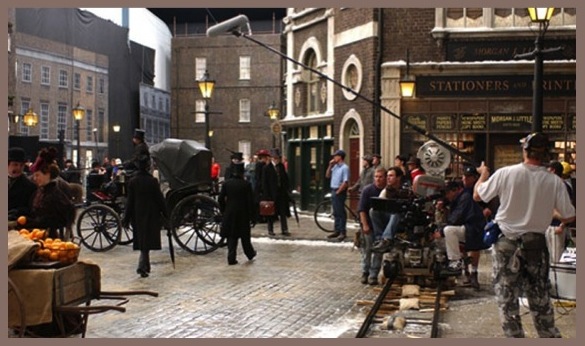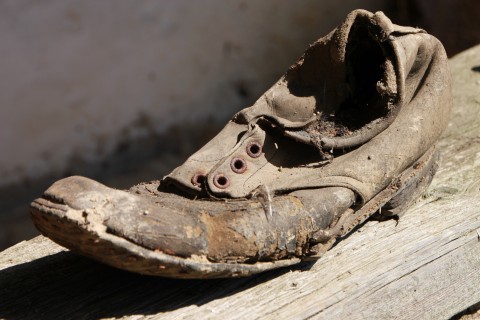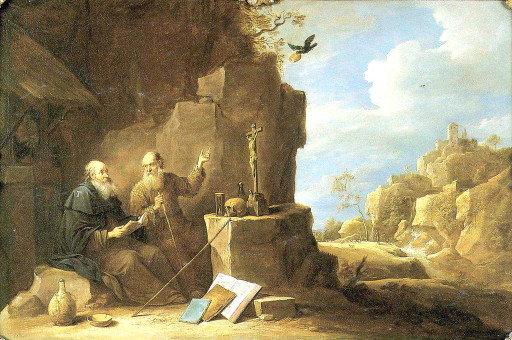Tue 18 Aug 2015
Signs I thought I saw
Posted by PJ under misreading, signs
No Comments
SURVIVOR’S SMORES*
Makes sense. After traumatic experience you want a treat.
*Remorse
Mirrored from Better Than Dead.
Tue 18 Aug 2015
Posted by PJ under misreading, signs
No Comments
Mirrored from Better Than Dead.
Tue 18 Aug 2015
Posted by PJ under art, quote of the day, truth, what the living do
No Comments
Random quote of the day:
“We are walking through fake scenes, but ourselves, as we walk through these scenes, are real.â€
—Haruki Murakami, interview, The Paris Review, No. 170, Summer 2004

Disclaimer: The views expressed in this random quote of the day do not necessarily reflect the views of the poster, her immediate family, Siegfried and Roy, Leonard Maltin, or the Mormon Tabernacle Choir. They do, however, sometimes reflect the views of the Cottingley Fairies.
Mon 17 Aug 2015
Posted by PJ under despair, quote of the day
No Comments
Random quote of the day:
“Even damnation is poisoned with rainbows…â€
—Leonard Cohen, “The Old Revolutionâ€

Disclaimer: The views expressed in this random quote of the day do not necessarily reflect the views of the poster, her immediate family, Siegfried and Roy, Leonard Maltin, or the Mormon Tabernacle Choir. They do, however, sometimes reflect the views of the Cottingley Fairies.
Sun 16 Aug 2015
Posted by PJ under folklore, hauntings, magic, paranormal, protection, ritual, shoes
No Comments

Shoes are magic. Many a woman will tell you that they have the power to ensorcell. Imelda Marcos, for instance, seemed to be the victim of a particularly strong shoe enchantment. But aside from the compulsion to buy these items, shoes have a traditional protective magic which seems just as strong.
I first learned of this aspect of shoe folklore when I read The Archaeology of Ritual and Magic by Ralph Merrifield, a wonderful survey of European (mostly British) folk magic and ritual from prehistoric to modern times. Shoes, as it turns out, were the most common protective magic for buildings, from at least the 14th century into the 20th. Generally they are found walled up in structures, sometimes pairs or new but usually an odd shoe and very worn, sometimes in groupings, but often solitary. These hiding places are usually spots where it’s unlikely they would have arrived accidentally: bricked up in chimneys, under well nailed down floorboards, behind pristine plastered or bricked walls and the like. This practice is found all over Europe, as well as Canada, Australia, and the USA—anywhere, I suppose, where the European diaspora happened. There may well be non-European examples of this belief.
It was apparently quite a secretive rite, considered bad luck to talk about. The last known examples of concealed shoes are from the early 20th century, but who knows? Given its secretive nature, the practice could still be going on. We can only speculate and piece together other superstitions to figure out what it may mean. Mr. Merrifield does an excellent job of this:
There are a few known superstitions about old shoes that may be relevant. There was a belief that a shoe thrown after someone setting out on a journey would ensure good luck and a safe return. This is a custom still observed when the bridal pair departs after a wedding…There is a strong association with fertility; we all know the fate of the old woman who lived in a shoe, and there used to be a custom in Lancashire of trying on the shoes of a woman who had just had a baby in order to conceive.
He also makes extensive use of the work of a paper written by June Swann, a pioneer in the study of shoe magic. (Thanks to the Apotropaios website for hosting a copy of this article.)
Concealed shoes might also be a magic device for containing evil spirits, a tradition at least dating back to the story of John Schorn, a 14th century priest in Buckinghamshire, who supposedly conjured the devil into a boot to trap him. This may be why shoes are often found near entryways to houses, so that they could contain evil spirits which might try to get in.
I can’t help wondering, and Mr. Merrifield also speculates about this, if it has something to do with a person’s soul being imprinted on items closely associated with them. Shoes and clothing were enormous expenses for people in centuries past and folks tended to wear things and repair them until they were in shreds, then repurpose parts thereof before actually discarding them. And if something has been worn that long and that extensively, might not a person leave some essence of themselves imprinted on the object? Might that essence bear some protective quality, some ability to guard and protect a building in the owner’s stead, a soul outside the soul?
I’m not sure I’d want to remove one of these shoes if I somehow found one in my walls. If tradition isn’t a strong enough motivator, the possibility of hauntings might give me pause.
There was an episode of Syfy Channel’s Haunted Collector featuring one of these concealed shoes—in this case, an old boot. (Episode 2.6 if this episode list from Wikipedia is correct.) Now, I think all paranormal T.V. shows should be taken with a grain of salt, sometimes an enormous boulder of salt. (And yet, I still watch them, a guilty pleasure.) But I found this episode genuinely fascinating because of my familiarity with the subject. John Zaffis, the curator of a Museum of the Paranormal, investigated a home from the 1800s in Lorain County, Ohio. The current owners reported that when they decided to renovate an old fireplace, they found various objects concealed within it, including an old boot. As soon as these objects were removed, they began experiencing paranormal activity. Zaffis determined that the shoe was the focus of the haunting (I can’t remember how), had it blessed in some way (memory fails me), and removed from the premises to his museum. According to the show, the paranormal activity ceased thereafter.
What’s interesting from a folklore perspective is that Merrified reports a similar haunting via June Swann:
Miss Swann is of the opinion that this is essentially a male superstition connected with the building trade, and understands that it is considered to be unlucky to remove the shoes from the house. There is even a story of an apparent haunting that began when a shoe was sent of the Museum of London for identification, and ceased completely when it was returned.
Maybe. Maybe not. Maybe. Please pass the salt.
Thu 13 Aug 2015
Posted by PJ under quote of the day, writers, writing
No Comments
Random quote of the day:
“The writer is one who, embarking upon a task, does not know what to do.â€
—Donald Barthelme, “Not-Knowingâ€

Disclaimer: The views expressed in this random quote of the day do not necessarily reflect the views of the poster, her immediate family, Siegfried and Roy, Leonard Maltin, or the Mormon Tabernacle Choir. They do, however, sometimes reflect the views of the Cottingley Fairies.
Wed 12 Aug 2015
Posted by PJ under friends, quote of the day, solitude
No Comments
Random quote of the day:
“Whosoever is delighted in solitude is either a wild beast or a god.â€
—Sir Francis Bacon, “Of Friendshipâ€

Disclaimer: The views expressed in this random quote of the day do not necessarily reflect the views of the poster, her immediate family, Siegfried and Roy, Leonard Maltin, or the Mormon Tabernacle Choir. They do, however, sometimes reflect the views of the Cottingley Fairies.
Tue 11 Aug 2015
Posted by PJ under genius, mediocrity, quote of the day
No Comments
Random quote of the day:
“In the republic of mediocrity, genius is dangerous.â€
—Robert Green Ingersoll, “Liberty in Literatureâ€

Disclaimer: The views expressed in this random quote of the day do not necessarily reflect the views of the poster, her immediate family, Siegfried and Roy, Leonard Maltin, or the Mormon Tabernacle Choir. They do, however, sometimes reflect the views of the Cottingley Fairies.
Mon 10 Aug 2015
Posted by PJ under depression, help, quote of the day, therapy
No Comments
Random quote of the day:
“The best cure for worry, depression, melancholy, brooding, is to go deliberately forth and try to lift with one’s sympathy the gloom of somebody else.â€
—Arnold Bennett, Things That Have Interested Me

Disclaimer: The views expressed in this random quote of the day do not necessarily reflect the views of the poster, her immediate family, Siegfried and Roy, Leonard Maltin, or the Mormon Tabernacle Choir. They do, however, sometimes reflect the views of the Cottingley Fairies.
Sun 9 Aug 2015
Posted by PJ under classics, fairies, folklore, forteana, hagiography, saints, spirits
No Comments

One of my favorite passages is from St. Jerome’s Life of Paulus the First Hermit, translated by W. H. Freemantle, 1893 (the spelling is Freemantle’s).
St. Antony is living in the desert of the Thebaid region of ancient Egypt and he’s thinking he’s a pretty righteous monk, a near-perfect specimen of hermit. But then in the deep of the night, God says to him, “Nuh-uh, there’s this other dude named Paulus that blows you out of the water. Or the desert, as the case may be.†Maybe God didn’t express it in quite that way, but Antony gets the message and nothing will do but he has to seek out Paulus. Now, Paulus is a hundred and one at this point, Antony is ninety-five, but Antony is determined to make this arduous trek anyway. He doesn’t know where Paulus abides, but has faith that the Lord will lead him there.
So, he’s trekking and he’s trekking and as he’s standing out in the noontide sun wondering which way to go next and he says…
“I believe in my God: some time or other He will shew me the fellow-servant whom He promised me.” He said no more. All at once he beholds a creature of mingled shape, half horse half man, called by the poets Hippocentaur. At the sight of this he arms himself by making on his forehead the sign of salvation, and then exclaims, “Holloa! Where in these parts is a servant of God living?” The monster after gnashing out some kind of outlandish utterance, in words broken rather than spoken through his bristling lips, at length finds a friendly mode of communication, and extending his right hand points out the way desired. Then with swift flight he crosses the spreading plain and vanishes from the sight of his wondering companion. But whether the devil took this shape to terrify him, or whether it be that the desert which is known to abound in monstrous animals engenders that kind of creature also, we cannot decide.
Antony was gob-smacked, as you can imagine, but he went in the direction indicated.
Before long in a small rocky valley shut in on all sides he sees a mannikin with hooted snout, horned forehead, and extremities like goat’s feet. When he saw this, Antony like a good soldier seized the shield of faith and the helmet of hope: the creature none the less began to offer him the fruit of the palm tree to support him on his journey and as it were pledges of peace. Antony perceiving this stopped and asked who he was. The answer he received from him was this:
“I am a mortal being and one of the inhabitants of the Desert whom the Gentiles deluded by various forms of error worship under the names of Fauns, Satyrs and Incubi. I am sent to represent my tribe. We pray you in our behalf to entreat the favour of your Lord, and ours, who, we have learnt, came once to save the world, and ‘whose sound has gone forth into all the earth.’â€
As he uttered such words as these, the aged traveller’s cheeks streamed with tears, the marks of his deep feeling, which he shed in the fulness of his joy. He rejoiced over the Glory of Christ and the destruction of Satan, and marvelling all the while that he could understand the Satyr’s language, and striking the ground with his staff, he said,
“Woe to thee, Alexandria, who instead of God worshippest monsters! Woe to thee, harlot city, into which have flowed together the demons of the whole world! What will you say now? Beasts speak of Christ, and you instead of God worship monsters.â€
He had not finished speaking when, as if on wings, the wild creature fled away.
Can you blame it? He asks for a blessing and a good word put in for him and his kind to God and he gets a screed. But lest anyone’s skepticism assert itself over this encounter, St. Jerome hastens to add:
Let no one scruple to believe this incident; its truth is supported by what took place when Constantine was on the throne, a matter of which the whole world was witness. For a man of that kind was brought alive to Alexandria and shewn as a wonderful sight to the people. Afterwards his lifeless body, to prevent its decay through the summer heat, was preserved in salt and brought to Antioch that the Emperor might see it.
He was alive, but apparently that encounter didn’t go so well for this poor, assaulted then salted being.
Antony and Paulus do hook up eventually, though Paulus seems pretty eager to send this weeping and screeding old guy on an errand so he can die in peace. You can read the whole story here.
Fri 7 Aug 2015
Posted by PJ under quote of the day, writing
No Comments
Random quote of the day:
“Diary, n. A daily record of that part of one’s life which he can relate to himself without blushing.â€
—Ambrose Bierce, The Devil’s Dictionary

Disclaimer: The views expressed in this random quote of the day do not necessarily reflect the views of the poster, her immediate family, Siegfried and Roy, Leonard Maltin, or the Mormon Tabernacle Choir. They do, however, sometimes reflect the views of the Cottingley Fairies.